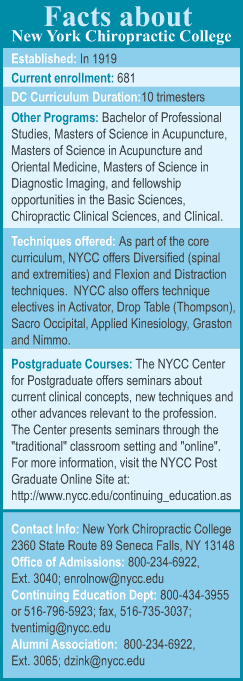Joseph E. Brimhall, D.C., has been president of Western States Chiropractic College in Portland, Oregon, since 2003. He was in private practice in Ogden, Utah, for more than 22 years. He has served as Chairman of the Utah Chiropractic Physicians Licensing Board, Chairman of the CCE Commission on Accreditation, and is currently President of the Council on Chiropractic Education.
Under Dr. Brimhall’s administration, Western States Chiropractic College has received a grant from the National Institutes of Health, launched a new massage therapy program, and has continued to be at the forefront of chiropractic care and education.
Q: What are WSCC’s areas of greatest strength for the chiropractic student and the profession?
A: WSCC, the second oldest chiropractic college in the world, has always been a leader in chiropractic education. It was the first chiropractic college to set up a four-year course of study, one of the first to be transferred from private ownership to non-profit status, the first to require two years of preprofessional requirements to enroll, and the first to be awarded a federal research grant.
Today, WSCC remains a leader in evidence-based health care and research, a curriculum that approaches instruction from a clinical perspective. We are actively involved in pursuing integrated approaches with traditional western, oriental, and naturopathic medicine. WSCC’s philosophy emphasizes wellness and health promotion and the college is well positioned to create effective paradigms for the future of health care.
The college is located in Portland, Oregon, one of the most beautiful and livable cities in the world. The campus is close to the spectacular Oregon Coast, and to mountain hiking and biking trails, world-class wind surfing, skiing, and many other outside recreational activities. Students are at home in the best possible environment to live and study.
Q: What are your plans for the future of the school with regard to chiropractic?
A: We have always taught our students the value of evidence as applied to the clinical setting.
We remain firmly dedicated to the Western States principle, “For the good of the patient.”
Q: Where do you see the chiropractic profession headed?
A: Health care is moving into an integrated era. Consumers are demanding that providers cooperate with each other. Chiropractic will continue its focus on comprehensive care and will be providing these services in both primary and collaborative settings.

